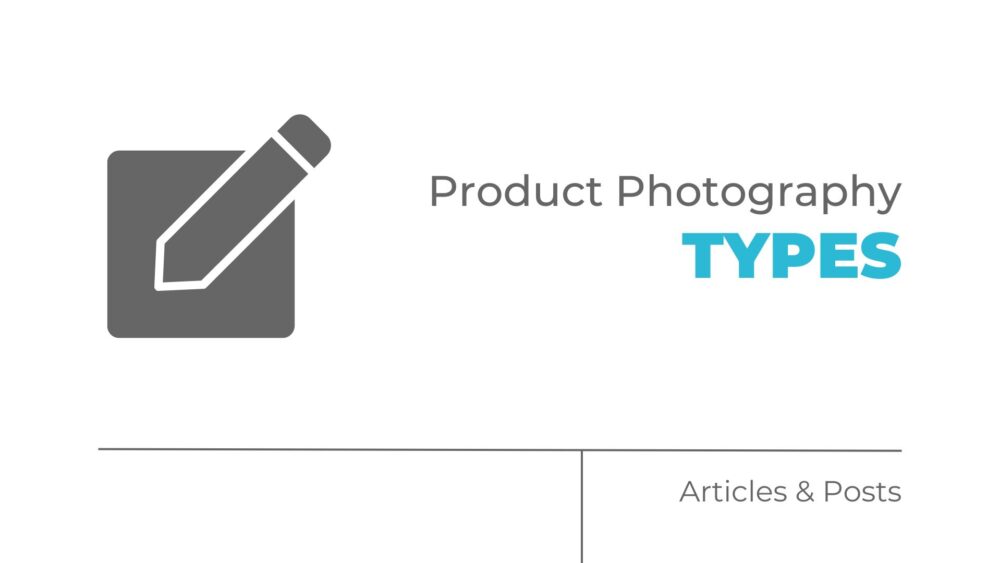You’re never just selling products – you’re making your customers promises of quality and satisfaction.
Good product photos make products look great and simplify marketing efforts.
They help companies present a consistent and appealing image at conferences, shows, and on digital platforms.
But of all the product photography types, which one do you need?
The basic types of product photography are:
- Studio Shots
- Lifestyle Images
- Scale Shots
- Detailed Close-Ups
- Group Shots
Let’s talk more about these types and how you know which one to use.
Types of Product Photography with Examples
Product photography can be as diverse as the products themselves, each type tailored to fit the unique needs of a company and its marketing goals.
Product photography follows some basic rules.
The type of photography will effect how these rules are used.
Here’s a look at some of the most effective types of product photography, complete with examples to inspire your next campaign:
Studio Shots
Studio shots are the quintessence of product photography.
These are clean, straightforward shots focusing solely on the product.
Imagine a sleek, high – resolution image of a new smartphone.
The background is usually white or neutral, emphasizing the product’s details and colors without distraction.
Lifestyle Images
Lifestyle photography is about context and storytelling.
It places the product in a styled scene that reflects how it would be used in everyday life.
For instance, a beautifully designed coffee maker might be photographed in a cozy morning setting, with a steaming mug and a relaxed home environment, suggesting warmth and comfort.
This type of photography resonates well with audiences because it helps them visualize the product in their own lives.
Scale Shots
Scale shots are important to provide customers with a real sense of the product’s size, which can be really helpful on your website.
This could involve placing the product next to items of known size to help potential buyers understand the dimensions accurately.
For example, a portable speaker might be photographed next to a common object like a book or a smartphone, giving a clear indication of its size.
Detailed Close-Ups
Close – up photography focuses on the quality and details of a product.
This could be the texture of a leather bag, the craftsmanship of a watch, or the intricate pattern on a ceramic vase.
These images are meant to allure by showcasing superior quality and detail that might not be visible in broader shots.
Example: A detailed close – up of a luxury watch might focus on the craftsmanship of its dial and the texture of its leather strap.
This is to help with highlighting the elegance and quality.
Macro photography techniques reveal the precision of its design.
Group Shots
Group shots are used to show a product range.
This could be a line of various styled shoes or a series of kitchen appliances in matching colors.
These shots are beneficial for showing all options available to the customer in one cohesive image.
Let’s say a group shot of a cosmetics line might display various lipstick shades or skincare products arranged to show the range or suggested usage sequence.
They decide to present the entire collection in a visually appealing setup.
How to set up product photography to help my product sell?
Here’s a breakdown to help you select the best type of of product photography for your needs:
Understand Your Audience
Your product photography should resonate with your audience’s expectations and lifestyle.
Understanding who your customers are and what appeals to them helps in selecting the right type of photography.
For a young, vibrant audience, lively lifestyle shots might be more effective, whereas a more mature demographic might appreciate detailed close – ups that emphasize quality and luxury.
Consider Your Brand Identity
Your choice of product photography should reflect your brand’s personality and values.
A brand that prides itself on craftsmanship and heritage might focus on detailed and textured shots, while a tech brand might opt for sleek studio shots that highlight the product’s modern design and features.
Evaluate the Marketing Platforms
Different platforms may require different types of images.
For instance, social media might favor more engaging and informal lifestyle shots, whereas e – commerce platforms need clear, detailed images that show the product from multiple angles.
Consistency is Key
Ensure that your product photography is consistent across all platforms.
This consistency helps in building a recognizable brand image and instills a sense of trust and reliability in your audience.
At the End of the Day
Product photography isn’t just about taking pictures of products.
It’s about crafting a narrative that appeals to your target audience, supports your brand identity, and streamlines your marketing efforts.
By carefully selecting the type of photography that best suits your needs, you can create compelling visuals that not only look good but also drive sales and increase customer satisfaction.


Comments are closed.